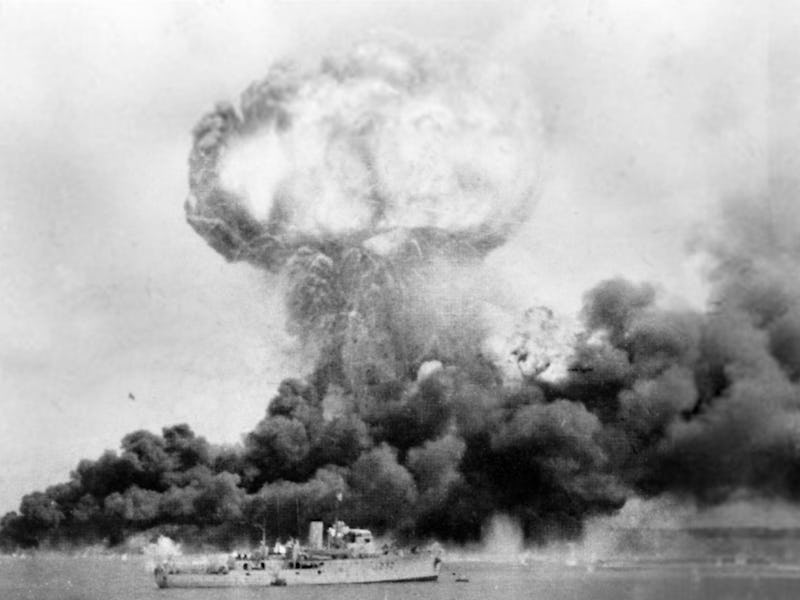In Greece’s second biggest city, Thessaloniki, a bomb forced tens of thousands of residents and refugees out of their permanent and temporary homes this weekend. This was no wartime evacuation, though, nor was it a terrorist attack. It was an unexploded bomb from World War II. Lying 16 feet deep, according to the Associated Press, this bomb sat undiscovered, next to a gas station, for decades. Over 70,000 people in its vicinity were none the wiser, until a gas company crew discovered it recently. Officials say the bomb, which weighs between 150 and 250 kilograms, is too degraded to be properly identified, so nobody knows yet whether it was an Ally bomb or a German one. It’s not the first bomb officials have removed from Thessaloniki, but with so many people in such close proximity, tensions were high.
Officials initially planned a smaller evacuation of a few hundred people on Friday, but canceled the plan, deeming it insufficient. The larger evacuation began on Saturday, which required gas stations to empty their tanks as a precaution. As of Sunday afternoon, Regional Governor Apostolos Tzitzikostas Tweeted that the operation had been successfully completed and people could return to their homes.
Once the area was cleared, the bomb disposal crew, which is familiar with the type of bomb they were working with, brought it to a range where it could be safely destroyed. The likely culprit is a defective fuse in the bomb. Many bombs of the era employed chemical time-delay fuses. As Smithsonian reports these fuses were prone to unexpected detonation, since they were never intended to explode on impact. Adam Higginbotham describes this process in Smithsonian:
Screwed into a bomb’s tail beneath its stabilizing fins, the fuse contained a small glass capsule of corrosive acetone mounted above a stack of paper-thin celluloid disks less than half an inch in diameter. The disks held back a spring-loaded firing pin, cocked behind a detonator. As the bomb fell, it tilted nose-down, and a windmill in the tail stabilizer began spinning in the slipstream, turning a crank that broke the glass capsule. The bomb was designed to hit the ground nose-down, so the acetone would drip toward the disks and begin eating through them. This could take minutes or days, depending on the concentration of acetone and the number of disks the armorers had fitted into the fuse. When the last disk weakened and snapped, the spring was released, the firing pin struck the priming charge and—finally, unexpectedly—the bomb exploded.
Thessaloniki, which served as an important port during World War II, was the target of significant bombing, so it makes sense that some of the unexploded bombs have gone undiscovered. Across Europe, hundreds of bombs have laid dormant for decades, and they’re often only discovered in the course of routine construction or infrastructure maintenance projects. Therefore, it seems likely that this will not be the last WWII-era bomb we’ll see, and with increasing population density in many areas, evacuations will become more likely too.
